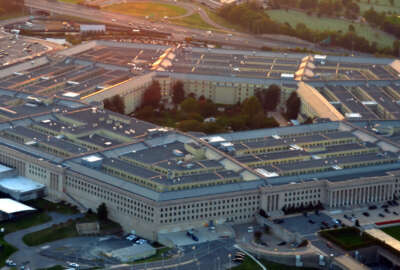The Defense Information Systems Agency is putting a heavy emphasis on mobility and identity protection as it moves forward in the coming years.
As it defines its realm of focus, it will also continue to consolidate its services into large contracts like its $17.5 billion ENCORE III contract and the $7.5 billion Systems Engineering Technology and Innovation program.
That comes in the wake of DISA picking CSRA for a nearly $500 million award for its Milcloud 2.0, that will connect DISA’s cloud systems to commercial clouds.
DISA is prioritizing its mobility work for the near future as it becomes more prevalent in military operations, said Tony Montemarano, DISA’s executive deputy director during a June 13 speech at an AFCEA event in Baltimore.
“We are really hitting hard on mobility. Everything we are doing, every development activity has to show a mobile side to it,” Montemarano said.
Another area of interest for DISA is graphics processing units (GPU) in terms of a need for real time computing.
“A GPU, that’s a parallel processor as opposed to the CPU which we’ve been using forever, that’s a serial processor,” said DISA Director Lt. Gen. Alan Lynn. “A serial processor takes a little bit of time, more real time would be on the GPU side of the house. So think about that. Driverless cars, do you want them to wait a few seconds to get to the braking part or do you want real time? That’s part of our future so we are betting on that future. We are looking at devices and systems that are GPU heavy.”
GPU can also be used for many sensors and Internet of Things that need to be monitored in real time.
What ties together both mobility and real time processing is identity protection.
DISA is in charge of 56,000 unclassified mobile devices and 1,500 classified devices.
Making sure those devices and the sensors they use are protected is one of DISA’s main goals. The Defense Department already said it plans to phase out the Common Access Card to use those devices.
“We are evaluating some solutions. We are about to put out a contract using an Other Transactions Authority equivalent,” Alfred Rivera, DISA’s director of the Development and Business Center said in April. “There is a contract. We were initially going to go through Defense Innovation Unit Experimental (DIUx), but now we are partnering with the Army through their OTA to do a contract. We are moving forward now and funding is available to do these initial pilots.”
Rivera said he didn’t have specific details of the pilots yet because they still are in the development phase.
Lynn echoed former DoD Chief Information Officer Terry Halvorsen’s idea to use biometrics and behavior data to verify a person’s identity instead of a physical card.
For example, a computer could notice the typing pattern of a person or use something like a heartbeat or fingerprint to recognized a person and give him or her access.
“Assured identity for the future is going to be critically important, both for the networks and just basic security for different installations,” Lynn said.
DISA is also trying to make some of its old applications new again.
“We are taking a look at our old apps and the way they operate and we’re looking for a platform where we can bring the apps back to life. We have a lot of [command and control] apps and what we are building toward is an HTML 5 presentation of those old apps with basic platform independence. All those mobile devices I was telling you about, now you have a platform to play those on,” Lynn said.
Contracts
Businesses that want to work with DISA on its future priorities should expect a lot of activities into large indefinite delivery/indefinite quantity contracts with multiple awards.
“We are trying to put out [contract] vehicles that, for one thing, minimize the number of vehicles we are putting out there. So, you have a more focused, yet flexible, environment,” Montemarano said. “We are trying to put out vehicles that we can optimize. Right now we have got vehicles in place that are so specific to a mission” that they end up being constraining.
Montemarano said DISA is trying to get away from stovepiping contracts.
“Everybody has that contract they like to hug, well we ain’t playing that game anymore,” Montemarano said. “Getting these kinds of integrated contracts just makes life a lot more survivable.”
Copyright
© 2024 Federal News Network. All rights reserved. This website is not intended for users located within the European Economic Area.

